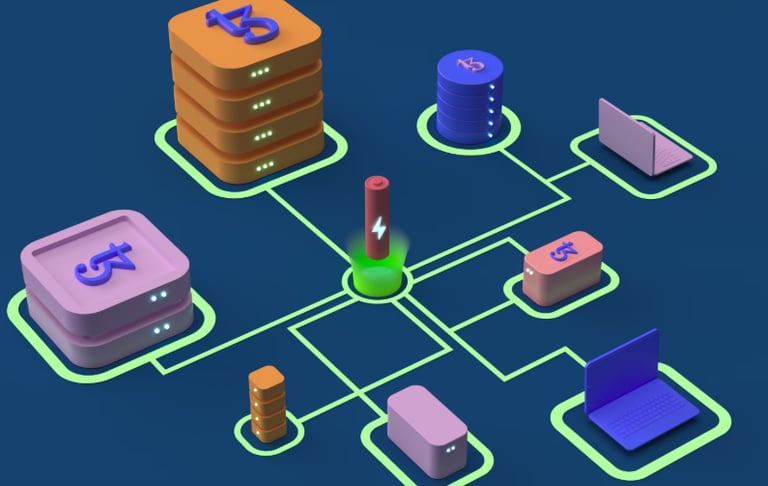Modern Computing Education with AI Integration: Shaping the Future of Learning


By Sikandar Raza
In the past decade, computing education has witnessed an extraordinary transformation. No longer confined to basic programming and algorithmic thinking, today’s computing classrooms are alive with intelligent systems, personalised learning paths, and hands-on AI experiences. The integration of Artificial Intelligence (AI) into computing education is not just a trend it is a necessary evolution driven by the demands of a rapidly advancing digital world.
1. The Changing Landscape of Computing Education
Traditionally, computing education focused on foundational topics such as data structures, object-oriented programming, databases, and software engineering. While these remain essential, the emergence of AI has introduced a new set of competencies: machine learning, natural language processing, neural networks, and data-driven decision-making. As a result, educational institutions worldwide are updating curricula to embed AI literacy alongside core computing skills.
AI integration begins early. Students as young as in primary school now experiment with visual programming tools that incorporate machine learning blocks. In higher education, computer science majors dive deep into building and training neural networks, developing chatbots, and understanding model bias and fairness. This reshaping ensures learners are not only consumers of AI but also creators and critics.
2. AI as a Teaching Assistant
Beyond content, AI is revolutionising the way computing is taught. Intelligent tutoring systems are offering personalised learning experiences tailored to each student’s pace and level of understanding. Platforms powered by AI can assess a student's performance in real time and adapt exercises or recommend supplementary materials accordingly.
Tools such as ChatGPT and GitHub Copilot are assisting learners in writing and debugging code, providing just-in-time help that mirrors the mentorship of a skilled tutor. These AI companions don’t replace educators—they empower them by handling routine queries, allowing teachers to focus on higher-order instruction and mentorship.
3. Preparing Students for an AI-Powered Workforce
The modern workplace increasingly values AI fluency across all industries—from healthcare and finance to marketing and logistics. Computing education with AI integration equips students with critical skills that transcend technical know-how. It cultivates data literacy, systems thinking, ethical reasoning, and the ability to collaborate with intelligent machines.
Moreover, interdisciplinary applications of AI are gaining prominence. Students are using AI to explore climate science, create interactive art, design smarter cities, and analyse social behaviour. This cross-pollination of disciplines not only sparks innovation but also prepares students to solve complex real-world problems.
4. Ethical AI and Responsible Computing
With great power comes great responsibility. AI systems can unintentionally propagate bias, invade privacy, or deepen inequality if not developed thoughtfully. Thus, modern computing education places strong emphasis on AI ethics. Students are taught to question the fairness of datasets, evaluate the societal impacts of AI deployment, and consider exclusivity in model design.
Case studies of real-world AI failures such as facial recognition inaccuracies or algorithmic bias in hiring tools—are used to spark critical discussions. Ethics is no longer a side topic; it is an integral part of every AI lesson, embedded into coding labs, project rubrics, and assessment standards.
5. Access, Equity, and the Global Reach of AI Education
AI integration in computing education also presents challenges, particularly regarding access and equity. High-performance computing, quality datasets, and internet access are prerequisites that not all students around the world possess. To bridge this divide, educators and technologists are developing low-resource AI tools, offline learning modules, and curriculum tailored to local needs.
Initiatives like Google's Teachable Machine, MIT’s Scratch extensions with AI, and TinyML platforms allow students to engage with AI on minimal hardware. These innovations democratise access, ensuring that the AI revolution is not limited to a privileged few.
6. Looking Ahead: Human-AI Collaboration as the New Literacy
The future of computing education lies in preparing students to become adept collaborators with AI. Rather than fearing machine replacement, students must learn how to augment their capabilities through AI. This includes understanding where AI excels, where it fails, and how to design systems that are transparent, fair, and aligned with human values.
AI is no longer just a tool to study it is a co-participant in learning and creating. Modern computing education, infused with AI, represents a shift from linear instruction to dynamic exploration, from fixed content to adaptive experience, and from solitary coding to collaborative problem-solving with intelligent agents.
Modern computing education with AI integration is not merely about teaching new technologies—it’s about cultivating new ways of thinking. By embracing AI as both a subject and a medium of instruction, educators are fostering a generation that is technically skilled, ethically aware, and ready to shape the intelligent systems of tomorrow. As this integration deepens, the classroom itself becomes a living laboratory for the future of humanity’s relationship with machines.

Register now to learn more about amazing stuff like quantum computing and robotics images.
